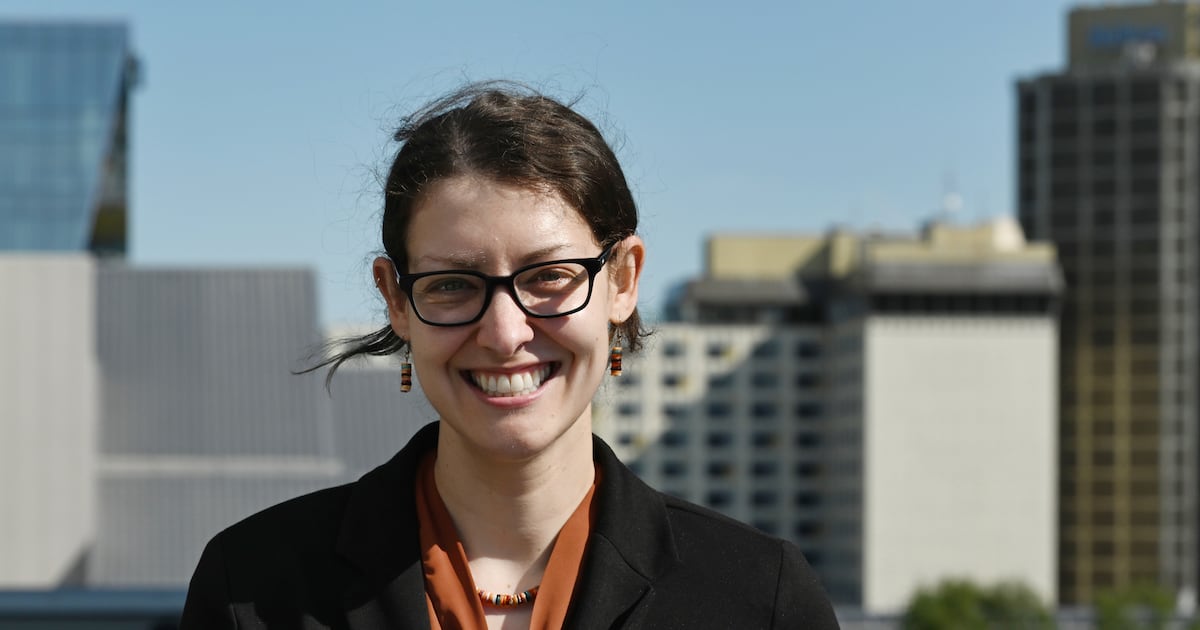Amanda Stricklan, a doctoral candidate from Anchorage, made a noteworthy presentation titled “A New Explanation for Coronal Rain Formation” during the 246th American Astronomical Society meeting at the Dena’ina Center on Wednesday. Currently a fifth-year Ph.D. student in astronomy at New Mexico State University and a research assistant at Los Alamos National Laboratory, Stricklan’s insights into the formation of coronal rain—a phenomenon in which solar plasma cools and falls back to the sun—mark a significant contribution to astrophysics.
This meeting was particularly meaningful for Stricklan, as it was her first time delivering an oral presentation at an American Astronomical Society event and the first time she has returned to her hometown in 12 years. “I wanted to come to this one because it’s the first time I’ve been back here since I graduated high school,” she shared, reflecting on her roots.
Her fascination with science began in her childhood in Anchorage, inspired by camping trips with her parents. As a student at South Anchorage High School, she didn’t initially consider astronomy as a career option until discovering the possibilities of majoring in the field at institutions that offered dedicated programs.
Stricklan obtained her undergraduate degree in physics and astronomy from the University of Georgia, where she later completed a master’s in physics. Her current research on the sun’s magnetic field has important implications; solar flares linked to this field can disrupt power grids, affect satellite communications, and pose risks to astronauts. “This whole field is called space weather,” Stricklan explained. “The more we can understand about that, the more we can protect ourselves, our power grid, and astronauts.”
Unlike Earth’s stable magnetic field, the sun’s magnetic field is a dynamic entity, often described by Stricklan as a “giant ball of yarn” that is in constant motion. Her research focuses on understanding the factors behind rapid temperature fluctuations in coronal loops, an area of study that has been debated for over four decades.
In collaboration with her mentor, Tim Waters, Stricklan employed mathematical formulas and simulations to correlate local instabilities within coronal loops to broader cycles. “It turns out that we are right. … The math checks out,” she said, indicating a promising direction in her findings.
Looking ahead, Stricklan plans to develop an in-house computer simulation to further test their hypotheses, moving away from earlier reliance on external simulations by NASA astrophysicist James Klimchuk. She optimistically considers the potential impact of her research: “Our findings on the coronal loops and their rain might be in textbooks one day,” although she recognizes the evolving nature of scientific inquiry. “Science is changing all the time, so you could be right one day, and then someone else comes along and says, ‘Actually, it’s this.’”
With just three months remaining in her doctoral program, Stricklan is also being considered for a full-time position at the Los Alamos National Laboratory, where she hopes to continue her research while contributing to code development. The laboratory, renowned for its high concentration of Ph.D.s, is backed by funding from the Department of Energy and the National Security Agency, though its future funding remains unpredictable. Despite these challenges, Stricklan and her colleagues remain committed to their work.
Stricklan’s journey from an inquisitive child to a scientist underscores the importance of STEM education, particularly for the next generation of Alaskans and young girls. “I wish people would just stay curious,” she said, encouraging a spirit of inquiry that fuels scientific exploration.

